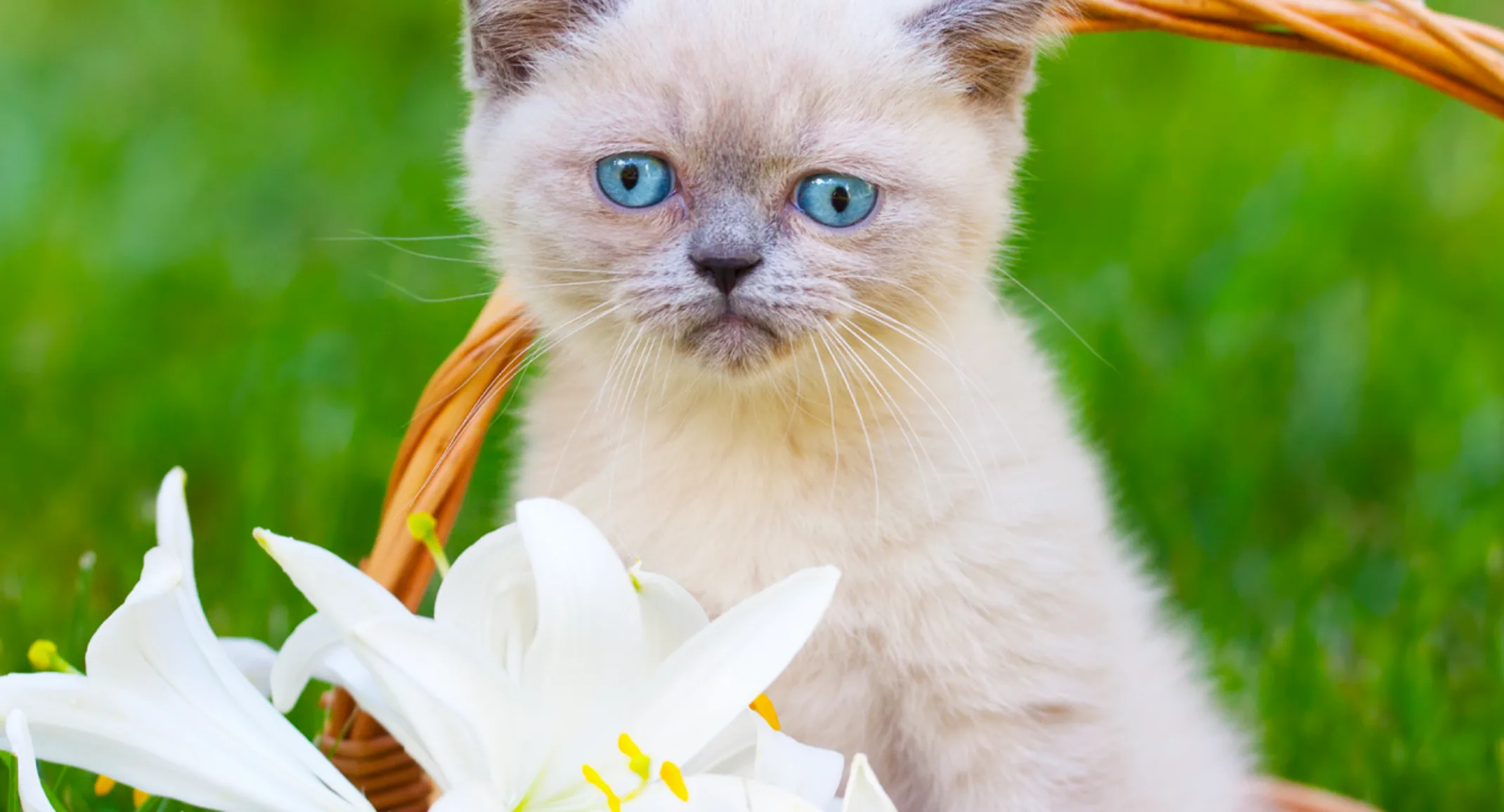7 Common Pet Toxins
Toxic Substances

Pets are curious creatures, and their inquisitive nature can get them into trouble if they encounter a toxin. Numerous products and items people frequently have in their homes are dangerous for pets, and being aware of common pet toxins can help save your four-legged friend from a veterinary emergency. Learn about seven pet toxins and how to keep your furry pal safe.
#1: Chocolate is toxic to pets
Chocolate is one of the most common pet poisoning culprits. The sweet treat contains caffeine and theobromine, and while humans can break down and excrete these ingredients, pets don’t metabolize them as efficiently. Chocolate ingestion can affect a pet’s central nervous system, kidneys, and heart.
Depending on the chocolate type, its caffeine and theobromine amounts vary. Generally, the darker the chocolate, the higher your pet’s toxicity risk, and baker’s chocolate, cocoa powder, and dark chocolate are the most dangerous for your furry friend. Signs typically start 2 to 24 hours after ingestion and include vomiting, diarrhea, increased heart and respiration rate, hyperactivity, and seizures.
#2: Xylitol is toxic to pets
Xylitol is often used as a sugar substitute in candies, baked goods, chewing gum, and certain peanut butters and can also be found in many human oral care products and pharmaceuticals. Blood sugar is controlled by insulin released from the pancreas. In dogs, xylitol causes a dose-dependent insulin release, resulting in a sudden blood sugar drop. In some cases, xylitol ingestion can also lead to liver failure.
Xylitol toxicity signs include vomiting, weakness, incoordination, seizures, and coma. Even a small amount can be harmful for your pet, especially if you have a toy- or small-breed dog. Cats don’t seem to be as affected by xylitol, but you should still avoid feeding your cat xylitol-containing products.
#3: Grapes are toxic to pets
Grapes and raisins can cause kidney failure in dogs, likely because they contain high concentrations of tartaric acid and potassium bitartrate. Some dogs seem to be more sensitive to grape toxicity than others, but factors that increase a dog’s risk are not clear. Toxicity is rare in cats but cases have been documented.
#4: Human medications are toxic to pets
Many over-the-counter (OTC) and prescription medications are toxic to pets, and you should never give your pet medication without consulting your veterinarian. Some of the most harmful medications for pets include:
Ibuprofen — Ibuprofen is a nonsteroidal anti-inflammatory (NSAID) that can cause signs including vomiting, bloody diarrhea, abdominal pain, incoordination, jaundice (i.e. yellowing of the skin and mucous membranes), and seizures.
Acetaminophen — Acetaminophen is especially toxic to cats and also dangerous for dogs. Signs include weakness, difficulty breathing, vomiting, and facial or paw swelling.
Beta-blockers — Beta-blockers are used in veterinary medicine to treat certain issues, but an overdose can result in signs that include vomiting, weakness, dangerously low heart rate and blood pressure, and collapse.
Adderall — Signs of Adderall ingestion in pets include agitation, excessive panting, increased respiration rate, increased body temperature, and seizures.
#5: Recreational drugs are toxic to pets
In 2023, marijuana made the Pet Poison Helpline’s Top Pet Poisons List for the first time. Pets can be exposed by eating edible products, such as baked goods and candies, or from secondhand smoke. Pets have more cannabinoid receptors in their brain, which means that cannabis causes more extreme effects in cats and dogs than in people and can lead to toxicity.
Pets react differently to cannabis exposure, and the amount that affects one pet may not cause signs in another. Luckily, cannabis intoxication is typically not fatal. Signs are usually neurologic, including incoordination, sleepiness, and disorientation. Other signs that may be present include excessive drooling, vomiting, and dilated pupils.
#6: Plants are toxic to pets
Many common household plants are toxic to pets. Examples include:
Lilies — Lilies are especially toxic to cats. Even drinking the water used to hydrate the plant can result in severe kidney failure.
Sago palm — All parts of the plant are toxic to pets, but the seeds are the most dangerous. Ingesting one or two seeds can lead to serious effects such as vomiting, diarrhea, depression, seizures, and liver failure.
Autumn crocus — Ingestion can result in oral irritation, bloody vomit, diarrhea, multi-organ damage, bone marrow suppression, and shock.
Chrysanthemum — Chrysanthemums contain pyrethrins that can cause signs such as drooling, vomiting, diarrhea, and in severe cases, incoordination and depression.
Oleander — Oleander contains cardiac glycosides that can cause heart function abnormalities, gastrointestinal (GI) upset, and in some cases, death.
7: Rodenticides are toxic to pets
Many available rodenticides are dangerous for your four-legged friend. Consider these deadly rodenticide types:
Anticoagulants — These products interrupt vitamin K activation, which is necessary for the body to produce clotting factors. Signs include nose bleeds, blood in the urine, difficulty breathing, and unexplained skin bruising,
Bromethalin — Cats are more sensitive to bromethalin than dogs, and signs can include hind-limb ataxia or paralysis, hyperexcitability, and seizures.
Cholecalciferol — Cholecalciferol ingestion can lead to acute kidney failure, resulting in signs such as lethargy, vomiting, and increased urination and thirst.
Tips to decrease your pet’s toxicity risk
You can’t watch your pet every second of the day. However, you can help reduce their toxicity risk by following these tips:
Read the label of any product you offer your pet to ensure it doesn’t contain a pet toxin.
Store your guests’ coats and purses in a secure area so your pet can’t find toxins, such as xylitol-containing mints and ibuprofen, in the pockets.
Store your medications out of your pet’s reach and ensure your furry friend is in another room when you take your medication.
Never give your pet medication without consulting your veterinarian.
Research all plants that you bring into your home to ensure they are pet-friendly.
Store potentially toxic household products on a high shelf or behind a secure closed door.
Prevent your pet from accessing areas where you use rodenticide.
Being educated about common pet toxins can save your pet from a potentially disastrous situation. Contact our First Coast Veterinary team if your pet needs advanced care.
